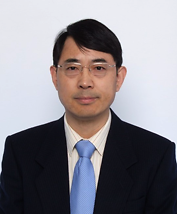"Microbial metagenomics of deepsea brine pools" Pei-Yuan Qian (OIST Marine Genomics Seminar Ser 30th)

Date
Location
Description
Speaker:
Dr. Pei-Yuan Qian, Hong Kong University of Science and Technology
Title:
Microbial metagenomics of deepsea brine pools
Abstract:
Atlantis II and neighboring Discovery Deeps are two deep-sea brine-filled pools located in the Red Sea rift, characterized by their hypersaline and hydrothermal conditions. Over the past 50 years, the seawater temperature of the Atlantis II Deep has raised from 56 to 71oC, whereas that of the Discovery Deep has maintained relatively stable at about 44 oC. We hypothesized that such a drastic temperature change in the Atlantis II Deep shall have driven the microbial community there through substantial adaptive changes; subsequently, there shall be substantial differences in microbial community structure and function between the Atlantis II Deep the Discovery Deep. Specifically, we try to address three fundamental questions: 1) are the Atlantis II Deep brine pool and the Discovery Deep brine pool biologically separated ecosystem? 2) have the changes in environmental condition driven the changes in microbial community structures and functions? and 3) has there been any adaptive change in microbial genomes in response to environmental changes? To address these questions, we conducted a comprehensive vertical profiling of microbial communities from the deep water to the lowest layer of brine water in both pools by 16S rRNA gene tag pyrosequencing. Despite the low cell density and extreme conditions, the deeper layers in both pools harbored higher microbial diversity than that of the similarly-dense deep water and the significantly denser brine interfaces. Classification of the amplicons revealed a highly dynamic community structure (in terms of both taxonomic groups and their relative abundance) shift vis-à-vis depth. In each site, the microbial community showed noticeable differences between the deep water, the interface layer and the lower body of the brine, indicating clear vertical microbial stratification that is the likely result of the highly stratified physical and chemical environmental conditions of these two brine pools. Cross-examining sites showed that microbial community structure in the brine interfaces was strikingly different. Also as expected were the substantial similarities between the microbial communities in the deep water above the brine interfaces, likely due to their physical connectivity. Most surprisingly, however, we discovered that the lowest brine layers of the two brine pools harbored similar microbial populations despite the drastic differences in temperature and heavy metal concentrations and the physical separation by a sill, probably implying a common microbial origin and suggesting that extremophiles are able to survive within a wide range of varying environmental conditions. Metagenomic analysis further showed that the Discovery Deep was dominated by halophilic methanogens, while in contrast, the Atlantis II Deep harbored thermo-tolerant, metal-resistant bacteria that can degrade aromatic compounds and mediate metal precipitation. The presence of aromatic compounds in the Atlantis II Deep was further confirmed by chemical analysis and supported by significantly enriched aromatic degradation pathways in the metagenome of this Deep. In the Discovery Deep, the most abundant genes from the microbes were related to sugar metabolism pathways and DNA synthesis and repair, suggesting different strategies of utilization of carbon and energy sources between the two brine pools. A substantial divergence in functional profiles of the two pools was further highlighted by different abundances of genes involved in ion transport, signal conduction, and transcription. In summary, the chemical and ecological differences between these two neighboring brine pools have strongly shaped their microbial communities and led to different functions and evolutionary scenarios. Altogether, the two brine pools are unique ecosystems warrant further exploration.
Acknowledgement: This study was supported by an award SA-C0040/UK-C0016 from the King Abdullah University of Science and Technology to PY Qian, Drs Wang Y, Lee OO, Yang JK, Lau SCK, Wong TH, Al-Suwailem A and many others for conducting both field and lab works.
Subscribe to the OIST Calendar: Right-click to download, then open in your calendar application.



